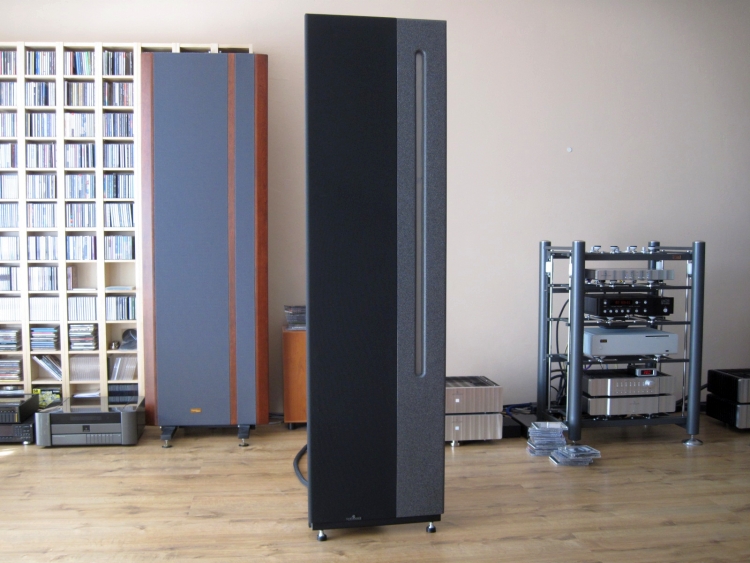
Detailed Info about the Apogee Centaur Major
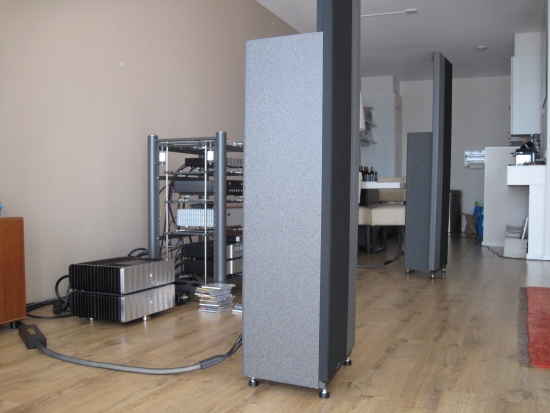
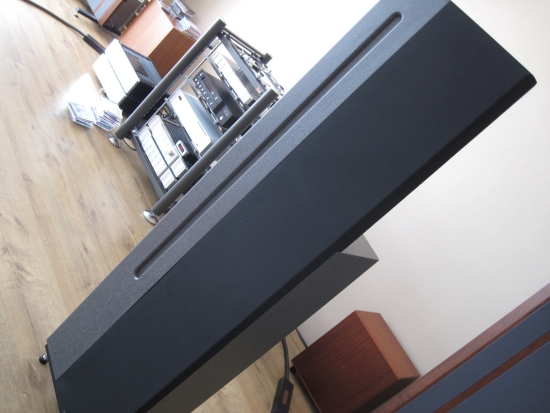
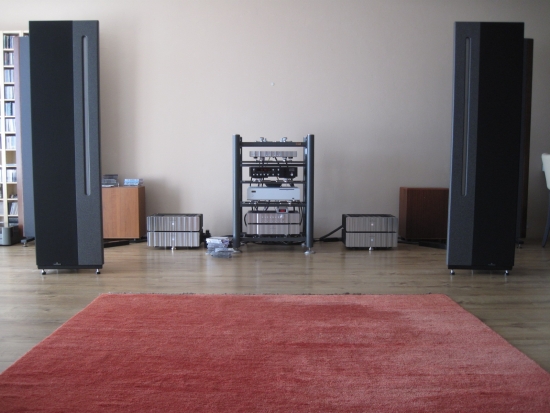
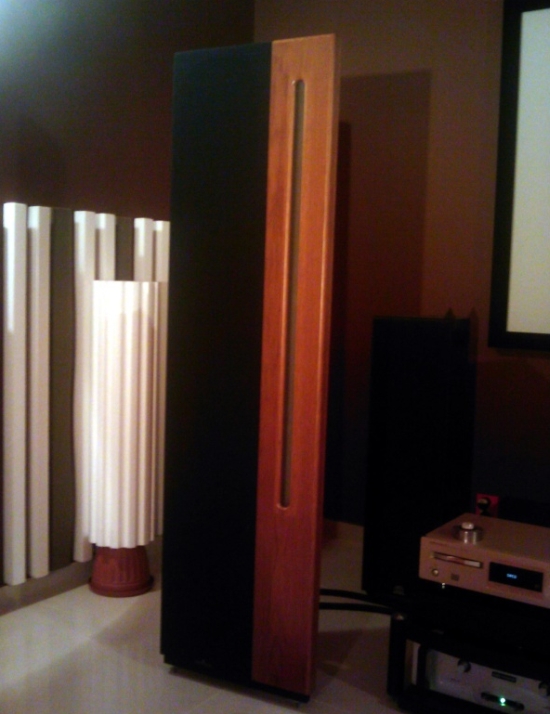
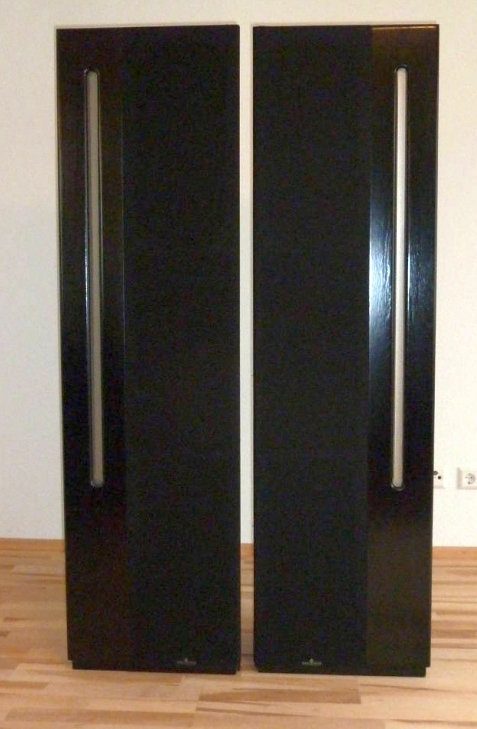
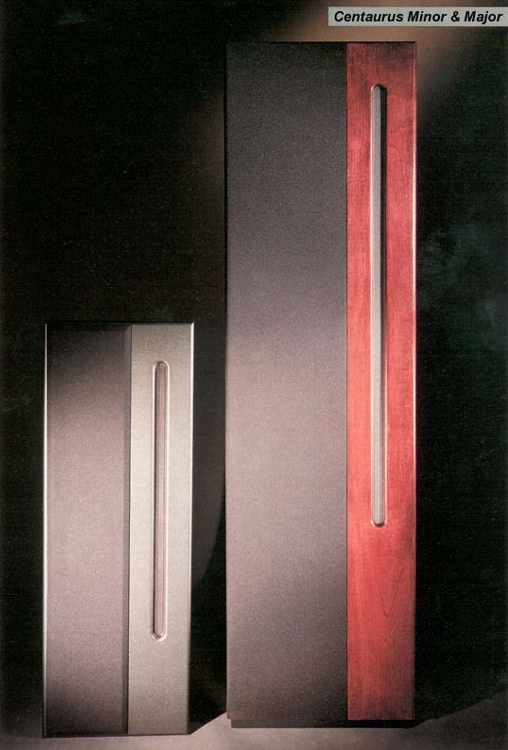
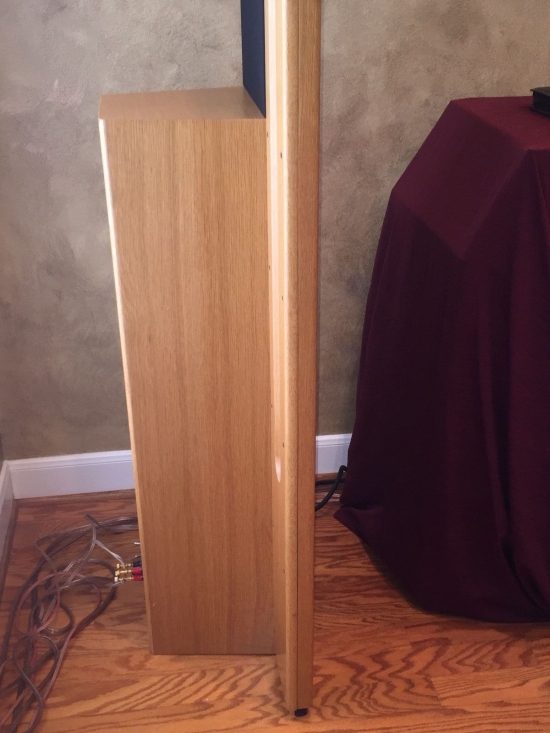
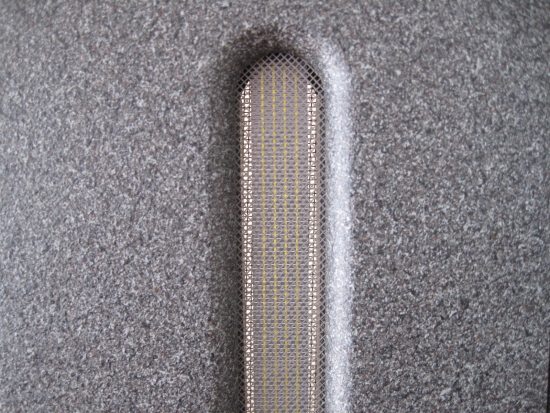
Above: MRTW front
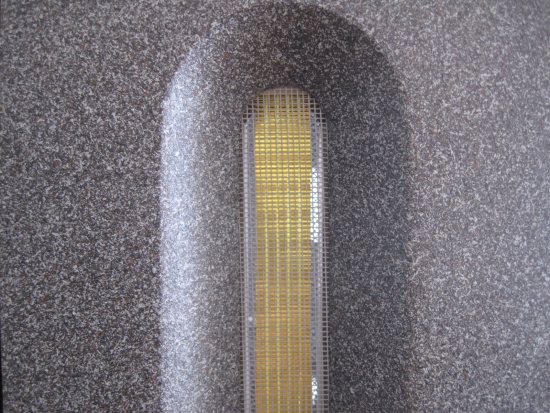
Above: MRTW back
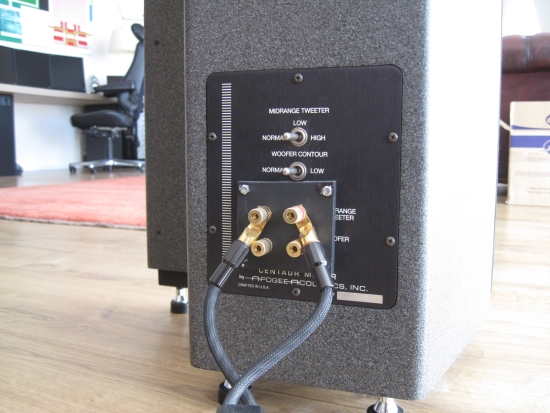
Above: upgraded connectors, below: original connectors
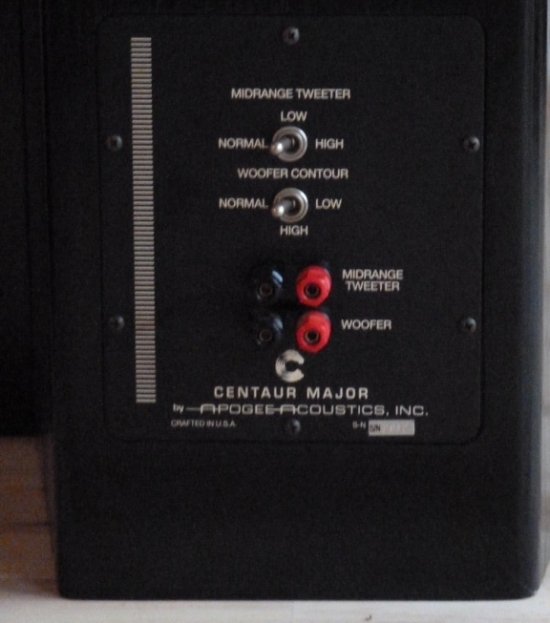
Official Info
The Centaur range was the first hybrid speakers range from Apogee, the Centaur Major being biggest model. Using a 10″ dynamic woofer and a 40″ ribbon tweeter the Major stands 163cm tall, 46cm wide and a total depth of 30cm.
The enclosure for the woofer is approximately 107cm high, 28cm wide and deep. The tweeter ribbons are on the inside edge of each speaker and like all Apogee’s work as a dipole. The speakers are nearly as room dominating as the Duetta Signatures, with only the width being significantly smaller, and require nearly as much free space around them. Although they will work with smaller amps, they justify being fed by a high quality, high current amp.
Specifications
1991-1994
Original Retail $6450
Height 163 cm
Width 46 cm
Impedance 3.5 – 6 ohms
Bass driver
10″ Dynamic cone
Midrange/Tweeter
40″ Aluminium/Kapton ribbon (etched 5 segment) (not 6!)
Max Sound Level
110dB
Sensitivity @ 3m
83dB
Frequency response
(-3dB @ 30Hz) to 20kHz
Crossover frequency (electronic)
450Hz
Suggested amp power
100W (into 8 ohms) 200W (into 4 ohms)
Weight
200lbs per pair
Finishes available
Silver grey, rosewood, walnut, blonde oak and mahogany
More Centaur
Short Review on the Apogee Listening Sessions page
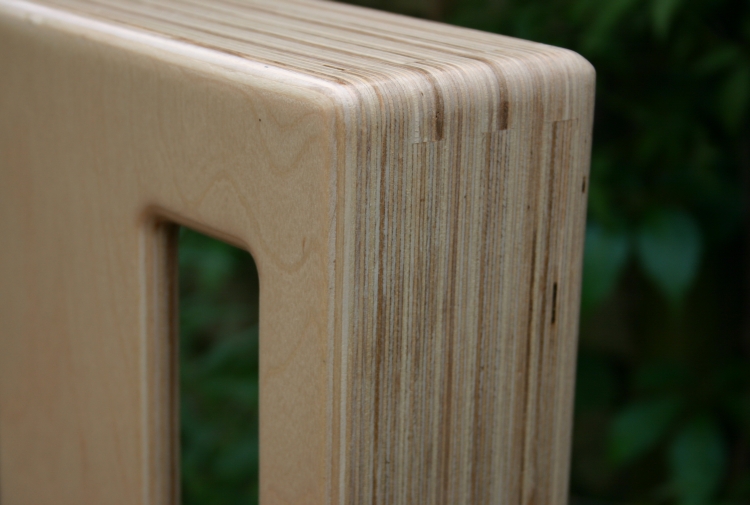
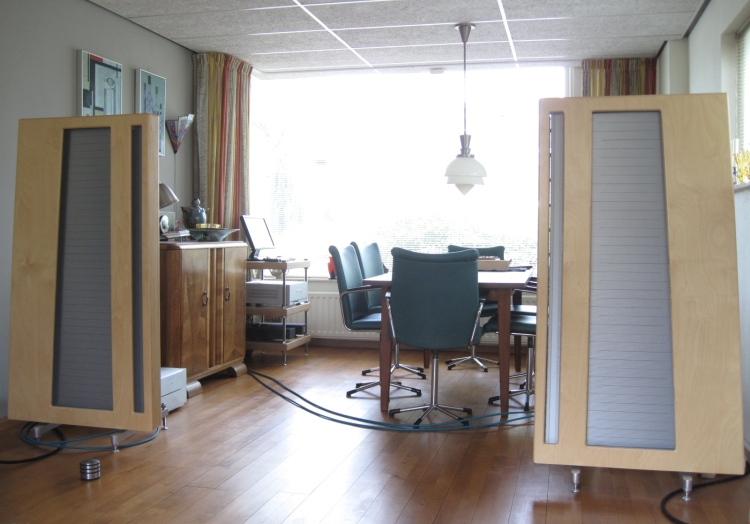
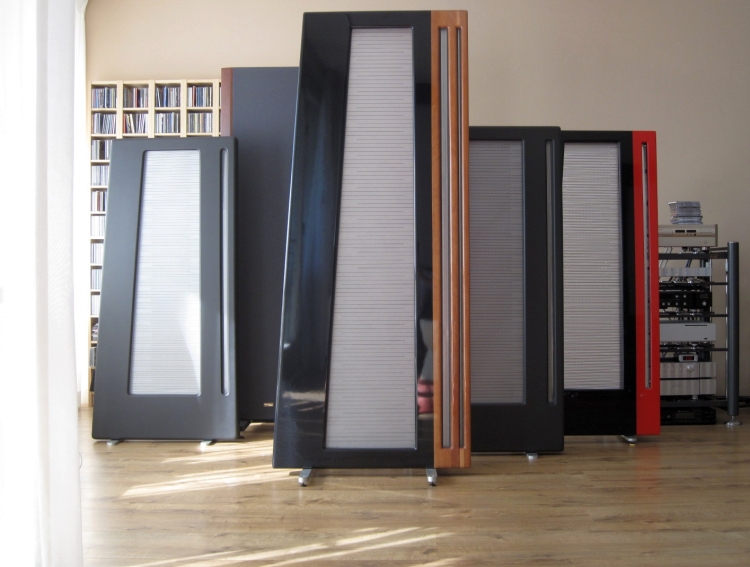
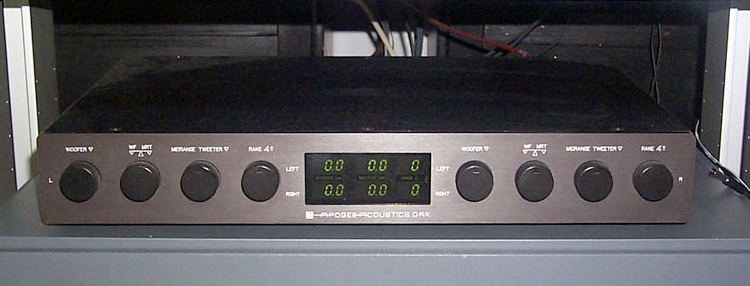
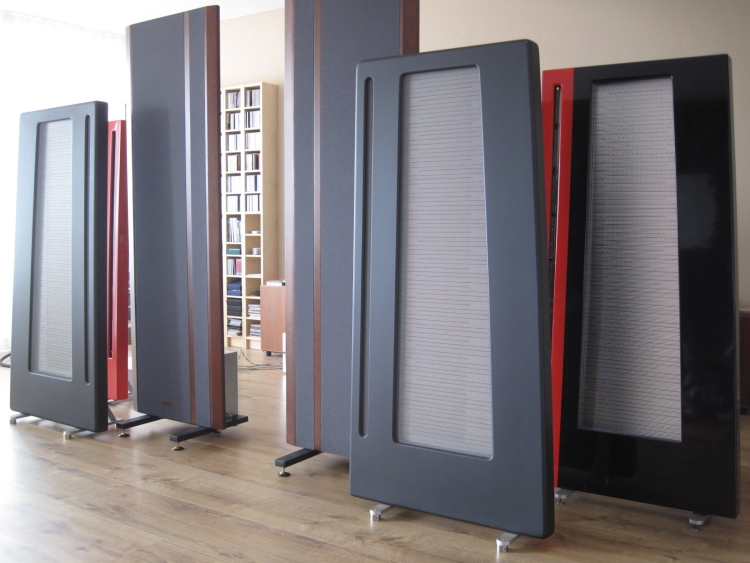
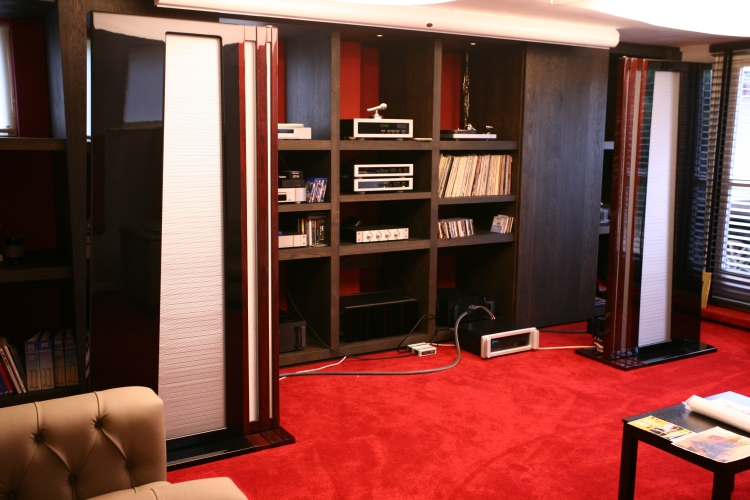
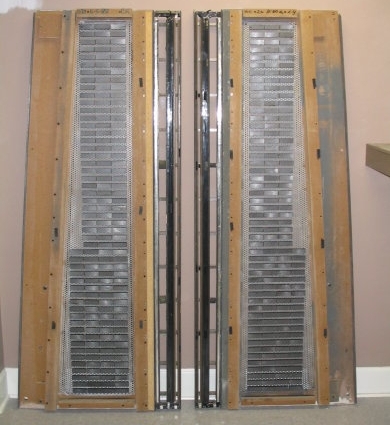
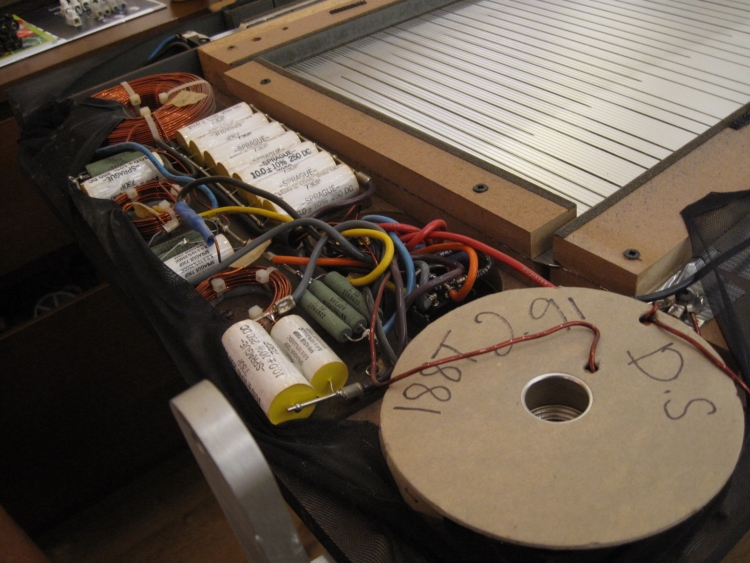
Hi Christiaan, I was re-reading your review of the Majors today and was struck by something, and that is the speaker cable hookup in the picture. It appears you have the + and – connectors of the speaker cable connected to the two tweeter/midrange binding posts. Help me recall, as I’ve been using a bi-wire configuration for so long my memory fails me, but when using a single set of speaker cables in a mono amplifier(s) set up: don’t you connect the + and – connectors for each cable to both the RED and BLACK speaker binding posts, i.e., the tweeter/midrange AND the woofer posts?
Then I thought you used “shorting bars” to connect the binding posts, i.e., a shorting bar to connect red to red and the same with black to black.
As I say, it’s been awhile…does this make sense?
Gary
Hi Gary, indeed, when using a single cable with a speaker that has binding posts for bi-wiring, one needs to connect the tweeter and woofer sections together, red with red and black with black. This is also how I use it. You can connect the woofer part with the speaker cable and from there connect to the tweeter part of vice versa. I found that this can make a large difference in sound, depending on the bridging leads used. Usually the speaker cable on the tweeter produces a smoother treble than via the bridging leads. If the photo you are referring to does not show the bridge cables then they were probably not yet inserted at the time that the picture was taken.
Thanks, Christiaan. Is there a particular make / type of bridging lead you recommend? Also, will a straight bare copper wire (Romex) do in a pinch as a bridging lead?
For all speakers, including Apogees, the effect is usually the same and the type of cable used to bridge the connection can make a large influence on the sound. I can elaborate on this but would prefer to to that under a more appropriate post, such as https://www.hifi-advice.com/blog/audiophile-insights/cables-info/speaker-cables-bi-wire-or-single-wire-and-what-about-bi-amping/
The other thing I’d add is there is discussion whether it’s best to connect the speaker cables to the midrange/treble binding posts and “jump” to the woofers. As mentioned above, Apogee doesn’t recommend this configuration but some folks on Audiogon do.
I thought I might comment here about my investigation of restoration options for my Centaur Majors, which have sustained damage from their being overdriven (uggh). Anyway, to the best of my knowledge the original woofers made for the Majors are no longer available. However, they can be replaced but I was told that in order to do so the speaker crossover needs to be adjusted, and not every Apogee-qualified speaker technician can do this.
I do wonder that if I decide to have this replacement made along with replacing the ribbons with new ones from Graz (Australia) whether I’ll have a speaker that no longer has the old Apogee sound signature, for better or worse. In other words, I’ll be given back a very different speaker.
Hi Gary, I would advise to check out other speaker brands that used these woofers. I’m sure they are widespread and probably not expensive. Different woofers, crossover mods and replacement ribbons will all make the speaker sound different. Some will say better, others will say too different. Technically, at least, they will be great again. Getting Duettas is always recommendable especially if you have not tried these before but note that these are also very different from Centaurs. Whether or not these will need restoring is a matter of luck. I’ve heard a couple of originals that still had no buzz to speak of. Alternatively, you could look into the Martin Logan Motion series that couples a magnetostatic MRTW to dynamic woofers, just like the Centaurs. Yes, these also sound different from the Centaurs but they’re not too far off. And you’ll have trouble-free and brand new speakers.
12/12/2021:
Hi Christiaan,
Given the state of the world today and the attractive selling prices for used audio gear, I’m going through my (and my brother’s) audio inventory and selling off what aren’t long term. This brings me to my Apogee Centaur Major speakers.
As you may recall, I unfortunately fried the woofers on them and had to take them to a reputable fellow who ostensibly repaired them. However, the ribbons on the speakers don’t appear in good shape after 30+ years (but I’m no expert) and it feels like the entire speaker needs to be restored.
But is it worth it? First of all, the only person I know of who can perform a full restoration is located across the country in Reno, so not drivable and hardly worth shipping to. The person on the East Coast who works with Apogees will only repair the woofer not the ribbon tweeters (which is sort of odd in and of itself). And then there’s cost of the restoration which will run into the thousands.
I’m just in the middle here as far as how to move forward. I feel like the Majors are a speaker that don’t get the love they deserve and thus there’s no deep aftermarket to speak of for them. Consequently I don’t want to dispose of them for next to nothing but at the same time, I then have to spend some real money to get them to where we know they can be. And then there’s the logistics.
It’s a tough one – any thoughts?
Hi Gary,
It’s a tough one indeed. You’re right, Centaurs, and especially the Majors, are not sought after and are not worth much, even if in good shape. But I agree that a refurb may not be worth it. May I just ask? They should be in a working condition, I presume? But, apparently, you are not using them. Why is that? If they have gone out of favor, then why spend big on a restore? Chances are that they will sound quite different with new ribbons. You may or may not like the result. Something else to consider is that you will never recuperate the costs of restoration when selling them. It’s only worth it if you love them and will use them. Otherwise, it’s money thrown away and then it makes more sense to put them up for sale as they are now. BTW warped MRTW foils can still sound very good, so long as there are no cracks and they still conduct well.
Thanks for the feedback.
I haven’t used the speakers in now a couple years as I’ve been listening to my brother’s Audio Note speakers. (And even those aren’t playing their best as I don’t think we have the proper amplification for them, which is part of why we’re selling off items. To purchase a synergistic integrated amp for it.)
Restoration – it raises as many questions as it resolves it seems.
The other reason I’ve not been using the CMs is amplification. My Krell monoblocs are the ones that got me into trouble with the CMs and I don’t wish a repeat. After learning more about these speakers (from you and others) I realized they don’t need the power other Apogees are famously known to require, and that I could have, and should have, gone with a lower wattage amp, perhaps even tube.
At the end of the day what I really need is an expert who can assess these speakers and tell me the true state of play. As I say, there were repaired (at least the woofers were) but not fully restored. I suppose once I have the integrated amp mentioned above I will test them and see how they sound.
To the point of amplification, have you found any inexpensive amp/preamp combo that is particularly ideal for the Majors? Maybe there’s a great little amp out there that creates magic with the speaker. To further complicate matters, I do have some Quicksilver Mid Mono tube amps, maybe they would do the trick.
Whatever the course of action, it’s not ideal.
Hi Gary,
Ah yes, I see. Well, I’ve no experience with tubes where it concerns the Centaurs or Centaur Majors but I do know that full range Apogees like either solid-state or very powerful tubes. That said, the Duettas still sounded amazing with the smallest home cinema Marantz amp in existence. It wasn’t perfect, but it definitely produced music! The Centaurs should indeed be happy with a medium power amp, as long as it is stable and perhaps best leaning to the smooth side. All I know is that they work very well with the JRDG model sixes, and by extension, the 625 v2 should also work very well.
Best,
Christiaan
Hi Christiaan,
I might add that on at least one audio website, it states:
Although they will work with smaller amps, they justify being fed by a high quality, high current amp.
I don’t think this is quite correct.
Hi Gary, Indeed, I don’t think they require vast amounts of current, just stability.